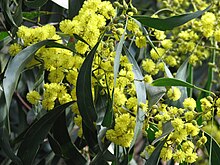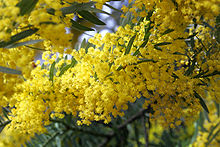Amaranthus, collectively known as amaranth, is a cosmopolitan genus of herbs. Approximately 60 species are recognized, with inflorescences and foliage ranging from purple and red to gold. Members of this genus share many characteristics and uses with members of the closely related genus Celosia.
Although several species are often considered weeds, people around the world value amaranths as leaf vegetables, cereals, and ornamentals. The ultimate root of "amaranth" is the Greek ἀμάραντος (amarantos) "unfading" with the Greek word for "flower" ἄνθος (anthos) factoring into the word's development as "amaranth" - the more correct "amarant" is an archaic variant.
 Amaranthus shows a wide variety of morphological diversity among and even within certain species. Although the family (Amaranthaceae) is distinctive, the genus has few distinguishing characters among the 70 species included. This complicates taxonomy and Amaranthus has generally been considered among systematists as a "difficult" genus.
Amaranthus shows a wide variety of morphological diversity among and even within certain species. Although the family (Amaranthaceae) is distinctive, the genus has few distinguishing characters among the 70 species included. This complicates taxonomy and Amaranthus has generally been considered among systematists as a "difficult" genus. Formerly, Sauer (1955) classified the genus into 2 sub-genera, differentiating only between monoecious and dioecious species: Acnida (L.) Aellen ex K.R. Robertson and Amaranthus. Although this classification was widely accepted, further infrageneric classification was (and still is) needed to differentiate this widely diverse group.
 Currently, Amaranthus includes 3 recognized sub-genera and 70 species, although species numbers are questionable due to hybridization and species concepts. Infrageneric classification focuses on inflorescence, flower characters and whether a species is monoecious/dioecious, as in the Sauer (1955) suggested classification. A modified infrageneric classification of Amaranthus was published by Mosyakin & Robertson (1996) and includes 3 subgenera: Acnida, Amaranthus, and Albersia. The taxonomy is further differentiated by sections within each of the sub-genera.
Currently, Amaranthus includes 3 recognized sub-genera and 70 species, although species numbers are questionable due to hybridization and species concepts. Infrageneric classification focuses on inflorescence, flower characters and whether a species is monoecious/dioecious, as in the Sauer (1955) suggested classification. A modified infrageneric classification of Amaranthus was published by Mosyakin & Robertson (1996) and includes 3 subgenera: Acnida, Amaranthus, and Albersia. The taxonomy is further differentiated by sections within each of the sub-genera.Dyes
The flowers of the 'Hopi Red Dye' amaranth were used by the Hopi (a tribe in the western United States) as the source of a deep red dye. There is also a synthetic dye that has been named "amaranth" for its similarity in color to the natural amaranth pigments known as betalains. This synthetic dye is also known as Red No. 2 in North America and E123 in the European Union.
Ornamentals
 The genus also contains several well-known ornamental plants, such as Amaranthus caudatus (love-lies-bleeding), a native of India and a vigorous, hardy annual with dark purplish flowers crowded in handsome drooping spikes. Another Indian annual, A. hypochondriacus (prince's feather), has deeply veined lance-shaped leaves, purple on the under face, and deep crimson flowers densely packed on erect spikes.
The genus also contains several well-known ornamental plants, such as Amaranthus caudatus (love-lies-bleeding), a native of India and a vigorous, hardy annual with dark purplish flowers crowded in handsome drooping spikes. Another Indian annual, A. hypochondriacus (prince's feather), has deeply veined lance-shaped leaves, purple on the under face, and deep crimson flowers densely packed on erect spikes.Amaranths are recorded as food plants for some Lepidoptera (butterfly and moth) species including the nutmeg moth and various case-bearer moths of the genus Coleophora: C. amaranthella, C. enchorda (feeds exclusively on Amaranthus), C. immortalis (feeds exclusively on Amaranthus), C. lineapulvella and C. versurella (recorded on A. spinosus).
Source, Images: http://en.wikipedia.org/wiki/Amaranth



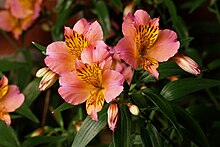

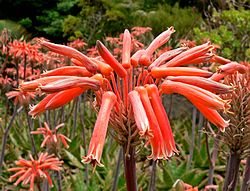




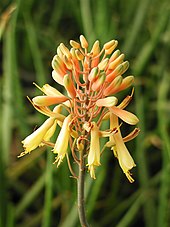

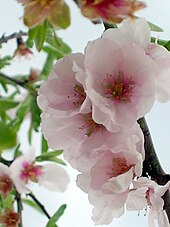





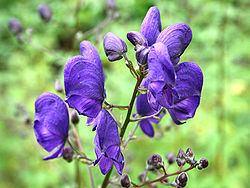


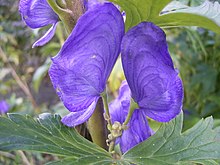


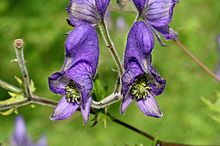
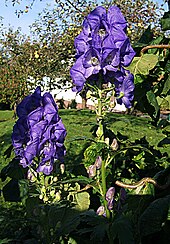





.jpg/170px-Acacia_saligna(03).jpg)


